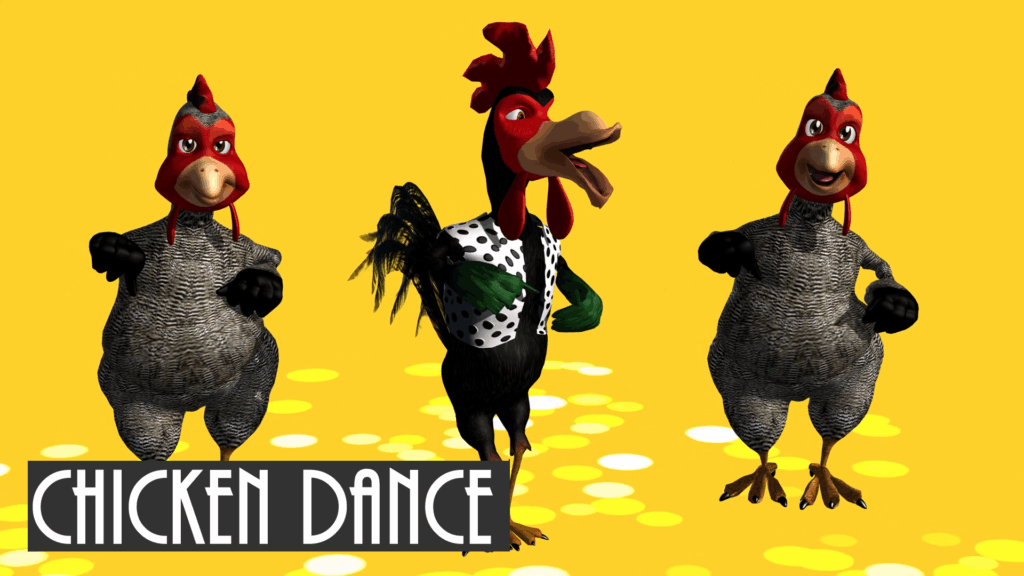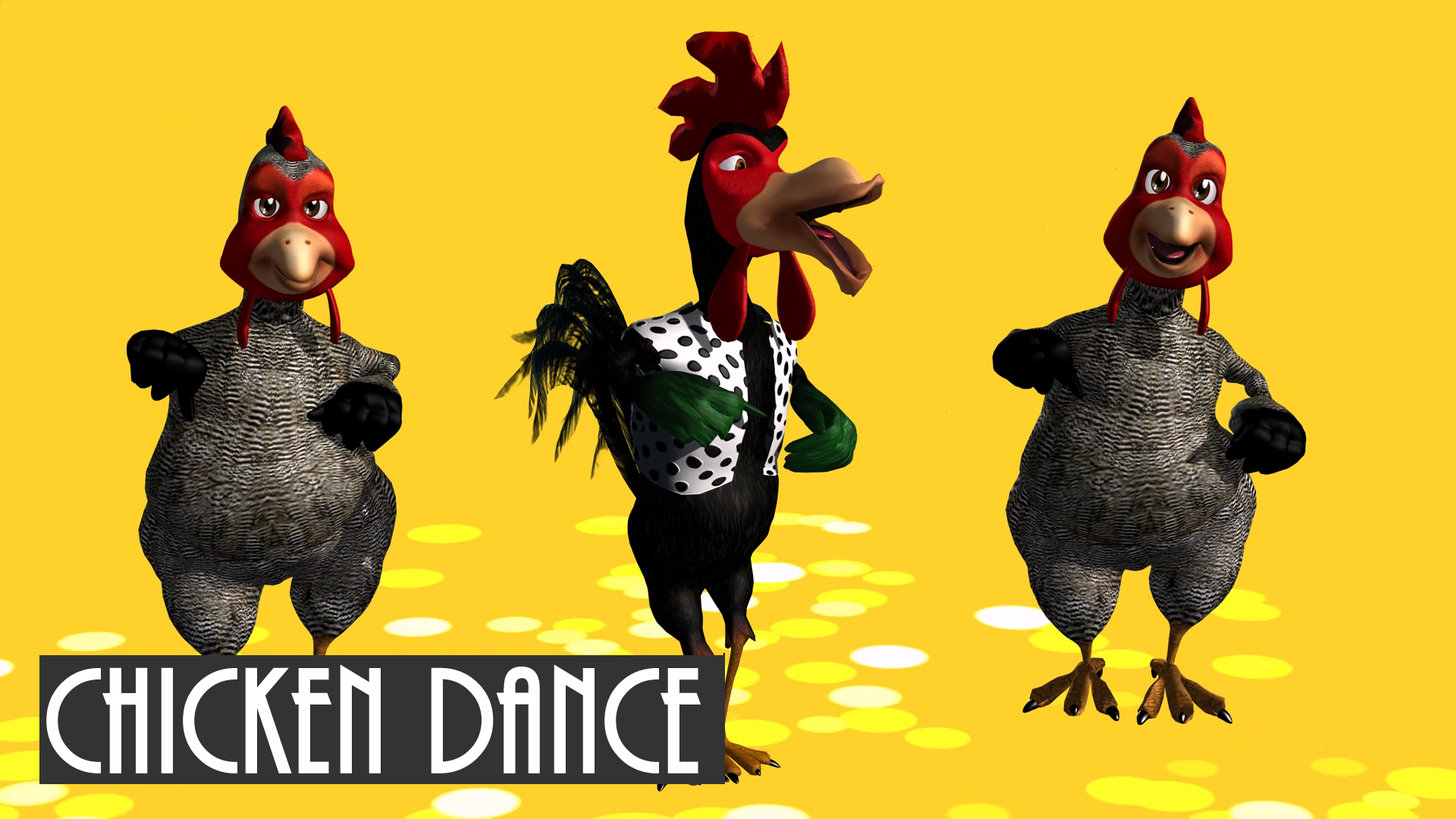
The Enduring Appeal of the Chicken Dance: Unraveling Its Meaning and History
The chicken dance. It’s a ubiquitous presence at weddings, parties, and festivals worldwide. A simple, repetitive sequence of movements accompanied by a catchy, slightly goofy tune. But have you ever stopped to consider the chicken dance meaning? Beyond the surface-level fun, there’s a surprisingly rich history and cultural context to explore. This article delves into the origins, evolution, and enduring appeal of this iconic dance, shedding light on what makes it such a beloved, albeit sometimes polarizing, tradition.
Origins and Evolution of the Chicken Dance
The story of the chicken dance begins not with chickens, but with accordions. The melody we associate with the dance is actually a version of a Swiss folk song called “Der Ententanz,” which translates to “The Duck Dance.” Composed in the 1950s by Werner Thomas, a Swiss accordion player, the tune gained popularity throughout Europe under various names and with different accompanying dances.
The transition from ducks to chickens occurred sometime in the 1970s. While the exact details are murky, the transformation is often attributed to Dutch accordion player Louis van Rijmenam, who released a version of the song called “De Vogeltjesdans” (The Birdie Dance). This version, combined with simple, bird-like gestures, started to gain traction at Oktoberfest celebrations in Germany and beyond. The dance, with its pecking motions and flapping wings, naturally evolved into the chicken dance we know today.
One key event solidifying the chicken dance‘s popularity was its introduction to the United States. In the early 1980s, a polka band from Ohio, the Frankie Yankovic Orchestra, recorded a version of “The Birdie Dance.” While Yankovic himself wasn’t particularly fond of the song, it quickly became a crowd favorite at their performances. From there, the chicken dance spread like wildfire across the country, becoming a staple at social gatherings of all kinds. [See also: Polka Music History and Influence]
The Chicken Dance: A Global Phenomenon
The appeal of the chicken dance lies in its simplicity and inclusivity. The steps are easy to learn, the music is infectious, and it requires no special skills or training. Anyone, regardless of age or dancing ability, can participate and have fun. This accessibility has contributed to its global popularity, with variations of the dance found in countless countries and cultures.
In Germany, the dance remains a fixture at Oktoberfest celebrations, where it’s often performed by thousands of people simultaneously. In the United States, it’s a wedding reception staple, a guaranteed way to get guests of all ages onto the dance floor. And in many other countries, the chicken dance is simply a fun, lighthearted way to celebrate and connect with others.
Cultural Significance and Interpretations
While often dismissed as a novelty dance, the chicken dance also carries a certain cultural significance. Some see it as a celebration of community and shared experience, a way to break down barriers and foster a sense of togetherness. The repetitive movements and silly nature of the dance encourage people to let loose, embrace their inner child, and not take themselves too seriously.
Others interpret the chicken dance as a form of social commentary, a playful critique of conformity and groupthink. The mindless repetition of the steps can be seen as a parody of societal pressures to follow the crowd, highlighting the absurdity of blindly adhering to norms. [See also: The Psychology of Group Behavior]
Of course, for many, the chicken dance is simply a fun and silly way to let off steam. It’s a chance to be goofy, to laugh, and to connect with others through shared movement and music. The chicken dance meaning, therefore, is ultimately subjective and depends on the individual’s perspective.
The Controversy Surrounding the Chicken Dance
Despite its widespread popularity, the chicken dance is not without its detractors. Some find it repetitive, annoying, and even offensive. Critics argue that it’s a lowbrow form of entertainment that caters to the lowest common denominator. They view it as a distraction from more meaningful forms of cultural expression and a symbol of mindless conformity.
Furthermore, some have raised concerns about the cultural appropriation inherent in the chicken dance. The song’s origins in Swiss folk music, combined with the dance’s association with German Oktoberfest celebrations, can be seen as insensitive to those who feel their cultural traditions are being trivialized or exploited. [See also: Understanding Cultural Appropriation]
However, proponents of the chicken dance argue that it’s simply a harmless form of entertainment that should be enjoyed for what it is: a fun and silly way to celebrate and connect with others. They point out that the dance has evolved over time and has been embraced by people of all cultures, regardless of its origins. Ultimately, whether you love it or hate it, the chicken dance remains a cultural phenomenon that continues to spark debate and discussion.
The Chicken Dance in Modern Culture
The chicken dance continues to be a relevant part of modern culture, appearing in films, television shows, and commercials. Its presence in popular media ensures that it remains familiar to new generations, perpetuating its legacy as a classic party dance. The dance has also been adapted and remixed in various ways, reflecting its enduring appeal and adaptability.
Online, the chicken dance has found a new audience through viral videos and social media challenges. People from all over the world are sharing their own interpretations of the dance, further solidifying its status as a global phenomenon. The internet has also made it easier for people to learn the dance and share it with others, ensuring that it will continue to be enjoyed for years to come.
The chicken dance has also been incorporated into fitness routines and exercise programs. The simple, repetitive movements can provide a surprisingly effective workout, while the fun and upbeat music can help to motivate participants. This unexpected application of the dance highlights its versatility and its ability to adapt to different contexts.
Conclusion: The Enduring Legacy of the Chicken Dance
The chicken dance, with its humble origins and quirky charm, has become a cultural icon. While its chicken dance meaning may be debated, its ability to bring people together and spark joy is undeniable. Whether you’re a seasoned dancer or a reluctant participant, the chicken dance remains a testament to the power of simple pleasures and the enduring appeal of shared experiences. It’s a reminder that sometimes, the best way to connect with others is to let loose, be silly, and embrace the absurdity of life. The chicken dance is more than just a dance; it’s a cultural phenomenon that continues to evolve and adapt, ensuring its place in the hearts (and on the dance floors) of people around the world. The enduring popularity of the chicken dance speaks volumes about its simple yet effective formula for fun. So, the next time you hear the familiar tune, don’t hesitate to join in – you might just find yourself having more fun than you expected. From weddings to corporate events, the chicken dance continues to bring smiles and laughter, a testament to its timeless appeal. The chicken dance is a reminder that sometimes, the silliest things are the most memorable. And that’s the real chicken dance meaning: pure, unadulterated fun. The chicken dance isn’t going anywhere, and that’s something to celebrate. So embrace the silliness and join the flock – you might just find your new favorite dance. Let’s not forget the pure joy derived from performing the chicken dance. The chicken dance is a legacy that will continue entertaining for generations to come. It’s a silly dance, but it’s *our* silly dance. So next time the music starts, cluck along and enjoy the chicken dance!

